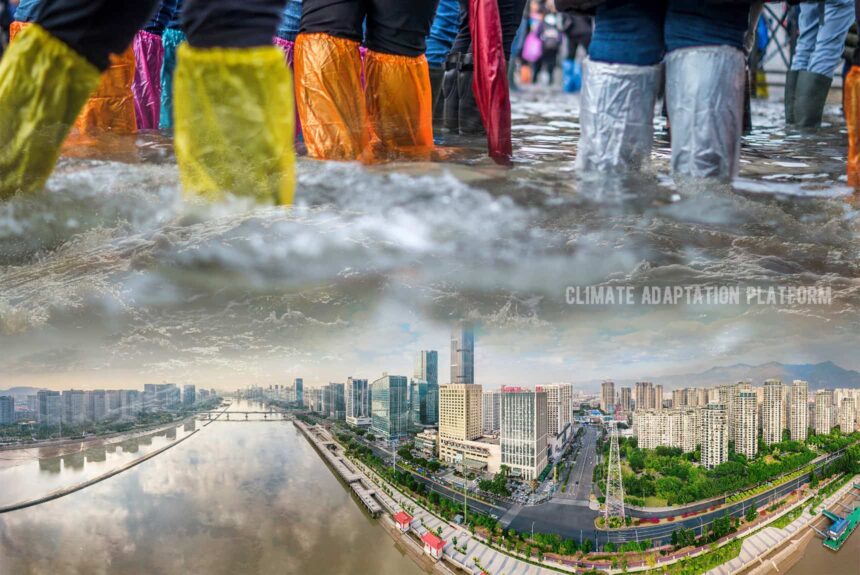Summer marks the flood season in China, with July, considered its critical period when the average rainfall is more than 10% higher than usual and even doubles in some parts of the southern region, particularly in the Pearl River basin in the southern province of Guangdong.
Reuters reports that the year’s rain events are a record for the Guangdong province. The province’s location within the Pearl River Delta region makes the area vulnerable to floods. According to the report, floods in July 2022 have submerged farmland, interrupted power and communications, affected roads and destroyed homes, with emergency response teams deployed throughout the country to administer relief.
Around the country, floods from heavy rains caused as many as 487 rivers to exceed their flood warning levels, evacuated more than 1.2 million people and resulted in direct economic losses of nearly 65 billion yuan ($9.7 billion).
In Yingde, a city in the southern province of Guangdong, locals say that this year’s flood is the work they have seen. Heavy rains have raised their river levels to historic heights since their record began in 1951.
The Economist article, “Fewer people are dying in floods in China”, says that despite the severe floods, surprisingly, the city hasn’t recorded any deaths in June or July. Only a few decades ago, between 1990 and 1999, death tolls in China reached 1000 from floods and landslides yearly, with three of those years listing 3,000 deaths. Since 2011, the number of fatalities shows a downward trend, topping at 1000 only twice, even though rain levels remained the same or even higher – especially in the last three years when there were more “intense rain events”, the article says.
Thanks to China’s efforts to improve its ability to cope with extreme weather and its commitment to set up an advanced risk management and prevention system over the next decade, its death tolls from floods and landslides have declined.
Disaster response is a political issue in China and one area where all government departments work together well. Scott Moore of the University of Pennsylvania says that the Communist Party has significantly invested in the country’s response since the 2008 devastating earthquake.
High-profile disasters are taken seriously by the Party as it tells something about its ability to protect its people. The article also says rescue and heroic efforts are used as propaganda in China.
China has also built thousands of dams and dykes in the past few decades, which served well in keeping flood waters away from populated cities in downstream areas. However, the article says that these massive built came with substantial environmental costs and forced resettlements of locals.
To cope with heavy rains that fall directly to cities downstream that upstream dams can’t mitigate, the country has invested billions of yuan into creating the “sponge cities“. But even these can buckle to cope with heavy and prolonged rains. Zhengzhou is China’s showcase sponge city, but after a year’s worth of rain poured out in 3 days, floodwaters in the city have killed 400 people.
Aside from lives lost, flooding results in billions in economic losses in China. Damage from the 2021 floods amounted to $23 billion, of which only 10% is insured. Although China comes second to Europe in economic losses, Europe’s insurance coverage is higher at 32% than China’s.
The United Nations Office for Disaster Risk Reduction (UNDRR) encourages governments to invest in disaster risk reduction as it can save lives, money, and future-proof development gains.
“The number of people needing humanitarian assistance due to storms, droughts and floods could climb beyond 200 million annually by 2030 – compared to an estimated 108 million today. This rising human toll would come with a huge financial price tag, with climate-related humanitarian costs ballooning to US$20 billion per year by 2030, in the most pessimistic scenario.”
The UN body warns that if governments don’t invest enough in climate action and disaster risk reduction, disasters’ economic and human toll will keep rising.
Sources:
Fewer people are dying in floods in China. (2022 July 7). The Economist. Retrieved from https://www.economist.com/china/2022/07/07/fewer-people-are-dying-in-floods-in-china
China gears up for disasters as flood season enters ‘critical period’. (2022, July 8). Reuters. Retrieved from https://www.reuters.com/world/china/china-tells-regional-officials-ready-disasters-after-months-torrential-rain-2022-07-08/
Business case for DRR. UNDRR. Retrieved from https://www.preventionweb.net/understanding-disaster-risk/business-case-for-DRR



Leave a Reply